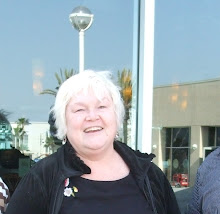 n The Seabrook, a retirement center in coastal South Carolina. I live with senior citizens, all of who are older than I am, some of them by more than 30 years. Many of them don't want to learn about technology--they protest that they are too old to learn new things. For some that is true, but for others they just need the encouragement to try new technology. I am a leader in this community in technology in several ways. When we had a party for all of those people who were over 90 (and there were more than 70 people in that category in a group of 220 or so residents), I took a short video of the party. You can find it on my Facebook Page. There may only be a few who have seen it, but some said how amazed the were at what technology could do.
n The Seabrook, a retirement center in coastal South Carolina. I live with senior citizens, all of who are older than I am, some of them by more than 30 years. Many of them don't want to learn about technology--they protest that they are too old to learn new things. For some that is true, but for others they just need the encouragement to try new technology. I am a leader in this community in technology in several ways. When we had a party for all of those people who were over 90 (and there were more than 70 people in that category in a group of 220 or so residents), I took a short video of the party. You can find it on my Facebook Page. There may only be a few who have seen it, but some said how amazed the were at what technology could do.I have also shown several people my iPhone and the pictures on it. There are those who can't quite change the ink on their printers and ask me for help. Some have been given iPads and Kindles by their children who show what they need to do, but they don't quite remember and turn to me. Even some of the people in the office--who are all younger than I am--need help for the occasional spread sheet. So I am doing what I can to be a leader in a community that is still back in the 20th century in many ways.











